Ponagar Tower: A Mark of Cham Culture
- Author: Admin
- | Hot destination
Ponagar Tower: A Mark of Cham Culture. This remarkable historical site is situated in Nha Trang, Vietnam, and stands as a testament to the rich cultural heritage of the Cham civilization. The tower not only reflects the architectural ingenuity of its time but also serves as a crucial symbol of the spiritual and religious practices of the Cham people. In this article, we will explore the significance of Ponagar Tower and its role in preserving the rich history and culture of the Cham people.
History of the Cham Civilization
The Cham civilization is one of the most fascinating aspects of Vietnamese history, known for its impressive artistic achievements and cultural richness.
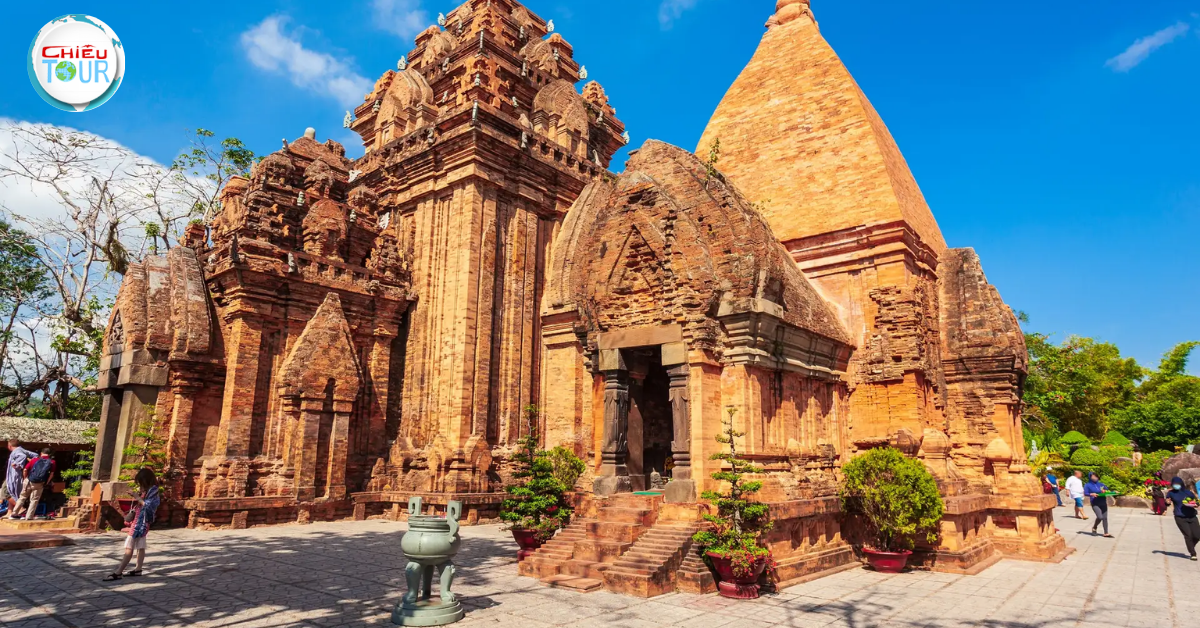
Origins of the Cham People
The origins of the Cham people can be traced back to around the second century AD. Emerging from the ancient Austronesian waves of migration, they settled along the central coast of what is now Vietnam. Their roots are deeply intertwined with Indian influences, particularly through maritime trade routes that connected them to the Indian subcontinent.
The Champa kingdom was established during the early centuries, and it rose to prominence by engaging in trade with various cultures, including the Chinese and Indians. The unique blend of local traditions and external influences shaped their identity, leading to a vibrant society marked by advanced agriculture, sophisticated governance, and a rich tapestry of art and religion.
Architectural Evolution
The architecture of the Cham civilization illustrates their creativity and adaptability. As the civilization flourished, distinct temple complexes began to emerge, with intricate carvings and towering structures designed to honor Hindu deities. The construction of these temples marks an important phase in Cham architecture, characterized by red brick and sandstone materials.
Ponagar Tower, built during the 8th century, stands as a prime example of this evolution. It encapsulates the architectural techniques and artistic styles of the Cham people, displaying a seamless integration of form and function while serving as a place of worship.
Decline and Legacy
By the 15th century, the Champa kingdom faced various challenges, including invasions from neighboring kingdoms and shifts in trade routes. Despite its decline, the legacy of the Cham civilization endures. The architectural remnants, including Ponagar Tower, continue to captivate visitors and scholars alike, offering insights into a culture that contributed significantly to Southeast Asian history.
Beyond its physical structures, the Cham civilization has left an indelible mark on Vietnamese culture, influencing language, cuisine, and spiritual beliefs. The Ponagar Tower is more than just a monument; it embodies the enduring spirit of the Cham people and their contributions to the broader tapestry of Vietnamese identity.
Significance of Ponagar Tower
Ponagar Tower holds immense significance both culturally and historically, as it serves as a reflection of the Cham people's beliefs, rituals, and artistic sophistication.
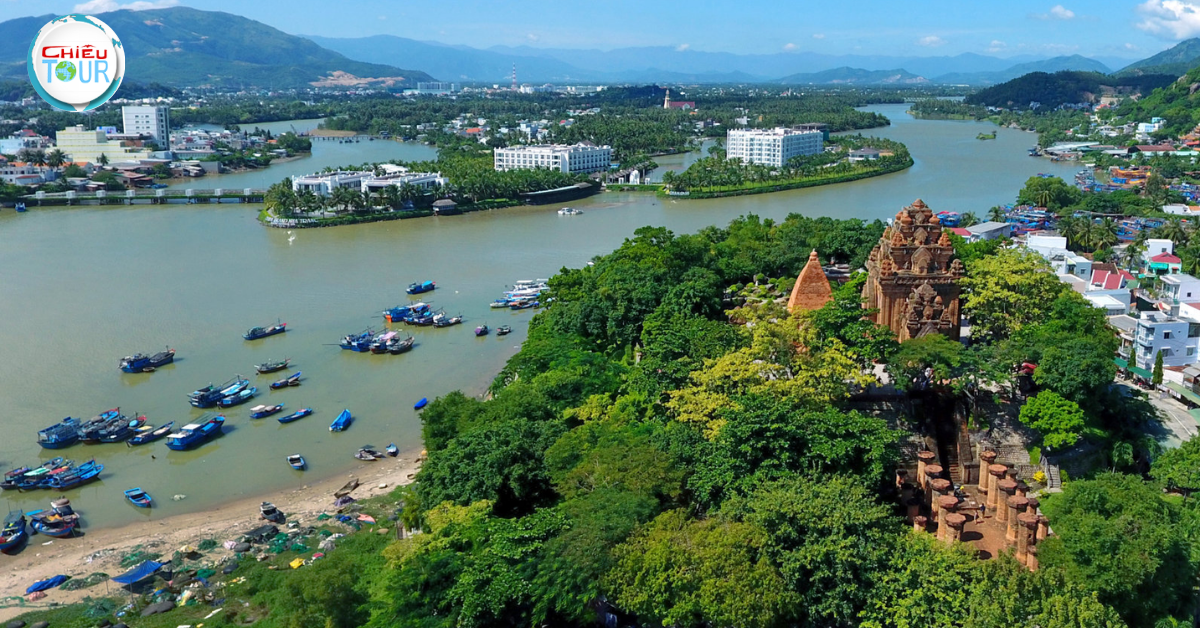
Spiritual Importance
At the heart of Ponagar Tower's significance lies its spiritual importance. Constructed in honor of the goddess Po Nagar, the tower is a sacred site for many who visit. The goddess Po Nagar is revered as the Mother of the Land, nurturing the earth and its inhabitants.
Visitors come to pay homage to the goddess, seeking blessings and protection. The rituals performed at Ponagar Tower showcase the persistence of Cham spiritual practices, which have survived the test of time despite the region’s diverse religious landscape.
Artistic Expression
The artistic expressions found within Ponagar Tower are stunning examples of Cham craftsmanship. Intricate stone carvings depicting various deities, floral motifs, and celestial beings adorn the walls, showcasing the dexterity and imagination of Cham artisans.
These artworks reflect not only the religious beliefs of the Cham people but also their connection to nature and the cosmos. Each carving tells a story, inviting observers to delve deeper into the intricate narrative woven into the very fabric of the tower.
Preservation of Cultural Heritage
Ponagar Tower is a cornerstone of the preservation of Cham culture. As one of the few remaining monuments of the Cham civilization, it serves as a vital link to understanding the historical context and cultural practices of a bygone era. Efforts to maintain and restore the tower are crucial in protecting this invaluable heritage for future generations.
Scholars, historians, and archaeologists recognize the importance of Ponagar Tower as a source of knowledge about Cham culture. Research initiatives and conservation projects play an essential role in ensuring that this landmark retains its significance as a symbol of resilience and cultural pride.
Architecture and Design of Ponagar Tower
The architectural design of Ponagar Tower is not only visually striking but also steeped in symbolic meaning, reflecting the advanced engineering skills of the Cham civilization.

Structural Features
Ponagar Tower is constructed using red bricks and features a unique rectangular base that tapers upward to create a pyramidal shape. The careful arrangement of bricks demonstrates the Cham's mastery in construction techniques, allowing the structure to withstand the elements for centuries.
The tower’s height, reaching approximately 23 meters, symbolizes the aspiration towards the heavens, a common theme in sacred architecture. This verticality invites visitors to contemplate the divine, drawing them into a spiritual journey that transcends the physical realm.
Symbolism in Design
Every element of the Ponagar Tower is imbued with symbolism. The use of specific shapes and patterns reflects cosmological beliefs, where the circular form represents the cyclical nature of life and resurrection. The tower serves as a microcosm of the universe, and its design mirrors the Cham worldview, emphasizing harmony between the earthly and celestial realms.
Additionally, the placement of the tower atop a hill enhances its visibility and prominence, reinforcing its status as a sacred site. This thoughtful integration of architecture and spirituality showcases the Cham people's deep reverence for their environment and the forces that govern it.
Comparisons with Other Cham Structures
While Ponagar Tower is a noteworthy example of Cham architecture, it is part of a larger network of similar structures scattered throughout Vietnam. Other famous sites, such as My Son Sanctuary and Thap Ba Tower, exhibit comparable architectural styles and serve similar religious purposes.
A comparative analysis reveals shared characteristics in design, layout, and ornamentation that define Cham architecture. These similarities suggest a cohesive cultural identity among the Cham people, despite regional variations. Studying these structures together provides valuable insights into the interconnectedness of Cham society and its enduring legacy.
Modern-Day Relevance of Ponagar Tower
In contemporary times, Ponagar Tower continues to hold relevance as a site of cultural tourism, artistic inspiration, and community engagement.
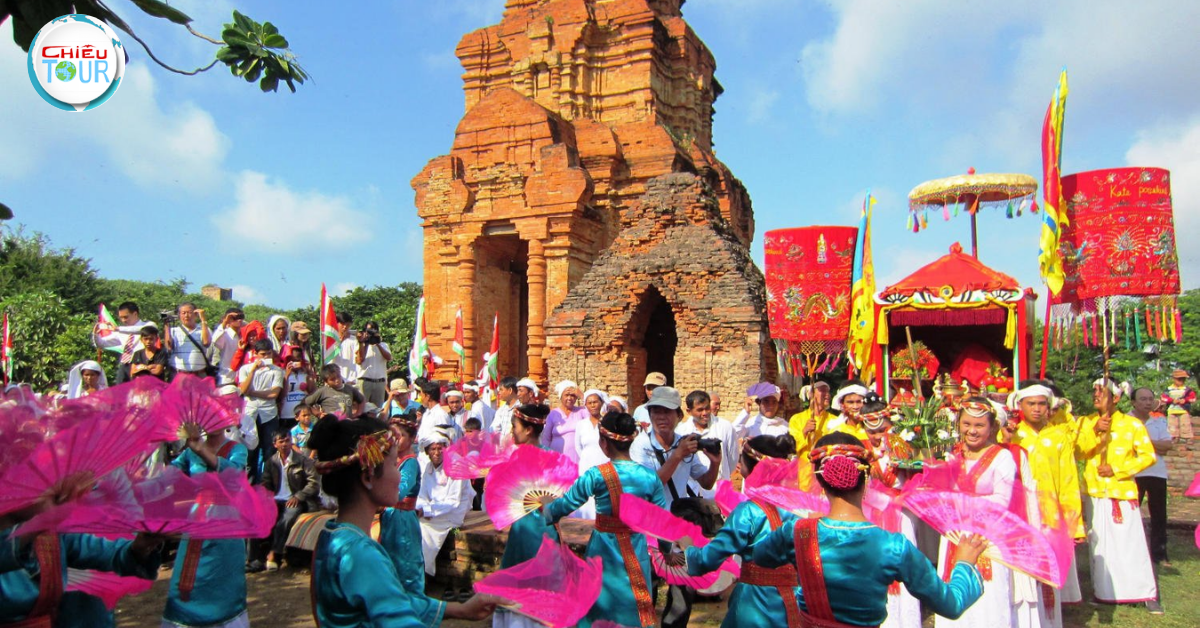
Tourist Attraction
As one of Vietnam's most popular tourist destinations, Ponagar Tower attracts thousands of visitors annually. Travelers from around the world come to marvel at its architectural beauty and immerse themselves in the rich cultural experiences it offers.
The tower's accessibility and the surrounding lush gardens create an inviting atmosphere, making it an ideal location for tourists seeking to connect with Vietnam's history. Local tour guides often share stories of the Cham civilization, enriching visitors' knowledge and appreciation of this remarkable heritage.
Cultural Events
Ponagar Tower serves as a venue for various cultural events and festivals, celebrating Cham traditions and fostering communal ties. These gatherings provide opportunities for the Cham community to showcase their rich cultural practices through music, dance, and traditional rituals.
Such events contribute to the revitalization of Cham culture, empowering the younger generation to engage with their heritage actively. By promoting cultural pride and awareness, Ponagar Tower plays a significant role in sustaining Cham traditions.
Artistic Inspiration
The beauty of Ponagar Tower has inspired countless artists, writers, and photographers. Its intricate designs and historical significance spark creativity, leading to new interpretations of Cham culture through various artistic mediums.
Photographers capture the tower's grandeur against the backdrop of natural landscapes, while painters create vivid renditions that convey the essence of Cham spirituality. This ongoing artistic engagement keeps the spirit of the Ponagar Tower alive, ensuring that it remains relevant in contemporary discourse.
FAQs
What is the history behind Ponagar Tower?
Ponagar Tower dates back to the 8th century and was constructed as a tribute to the goddess Po Nagar. It symbolizes the Cham civilization's architectural prowess and reflects their spiritual beliefs.
Is Ponagar Tower still used for religious ceremonies?
Yes, Ponagar Tower is an active site for religious ceremonies. Visitors often partake in rituals and offerings to seek blessings from the goddess Po Nagar.
Can tourists visit Ponagar Tower?
Absolutely! Ponagar Tower is open to tourists all year round, providing an opportunity to explore its architectural beauty and learn about Cham culture.
What kind of artwork can be found at Ponagar Tower?
The tower features intricate stone carvings depicting various deities, celestial beings, and floral motifs. These artworks showcase the artistic skill of the Cham artisans and reflect their spiritual and cultural beliefs.
How does Ponagar Tower contribute to the preservation of Cham culture?
Ponagar Tower serves as a vital link to Cham history, offering insights into their traditions and beliefs. Its preservation efforts ensure that this cultural heritage is maintained for future generations.
Conclusion
Ponagar Tower: A Mark of Cham Culture stands as a powerful reminder of the rich heritage of the Cham civilization. With its historical significance, architectural marvels, and spiritual essence, the tower serves as a bridge connecting the past with the present. It is not just a monument; it is a living embodiment of the Cham people's resilience and creativity.
Through continued efforts to preserve and celebrate Ponagar Tower, we can ensure that the cultural legacy of the Cham civilization thrives for generations to come. The tower invites us to reflect on the values of our ancestors while inspiring us to embrace our collective identity as stewards of history.
 Vietnam
Vietnam 
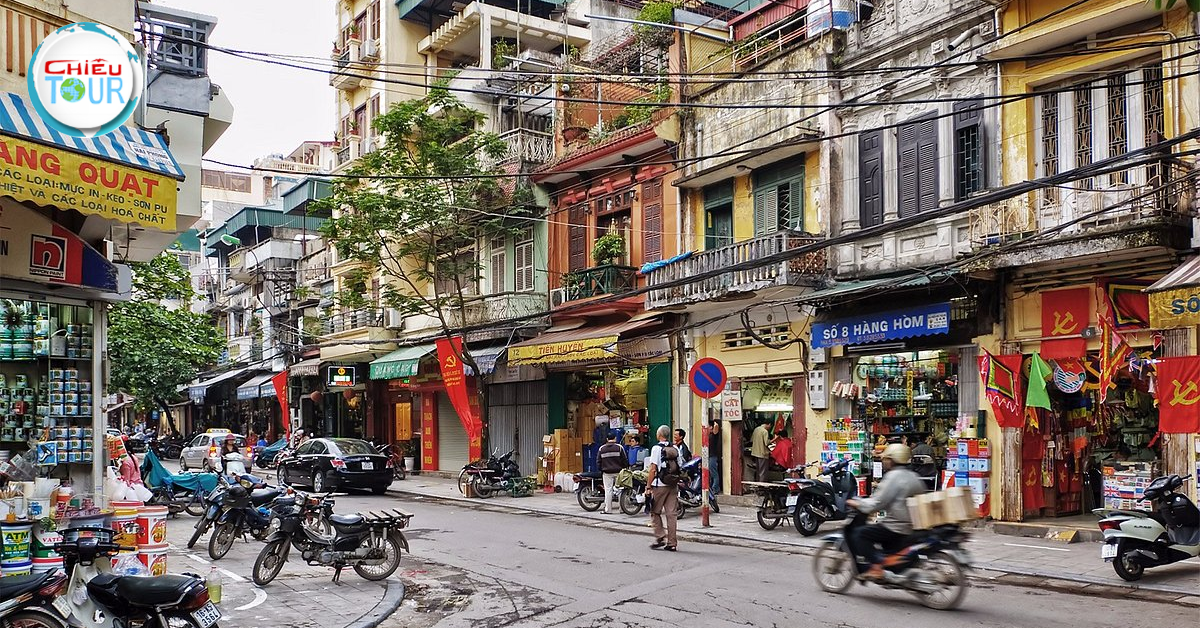
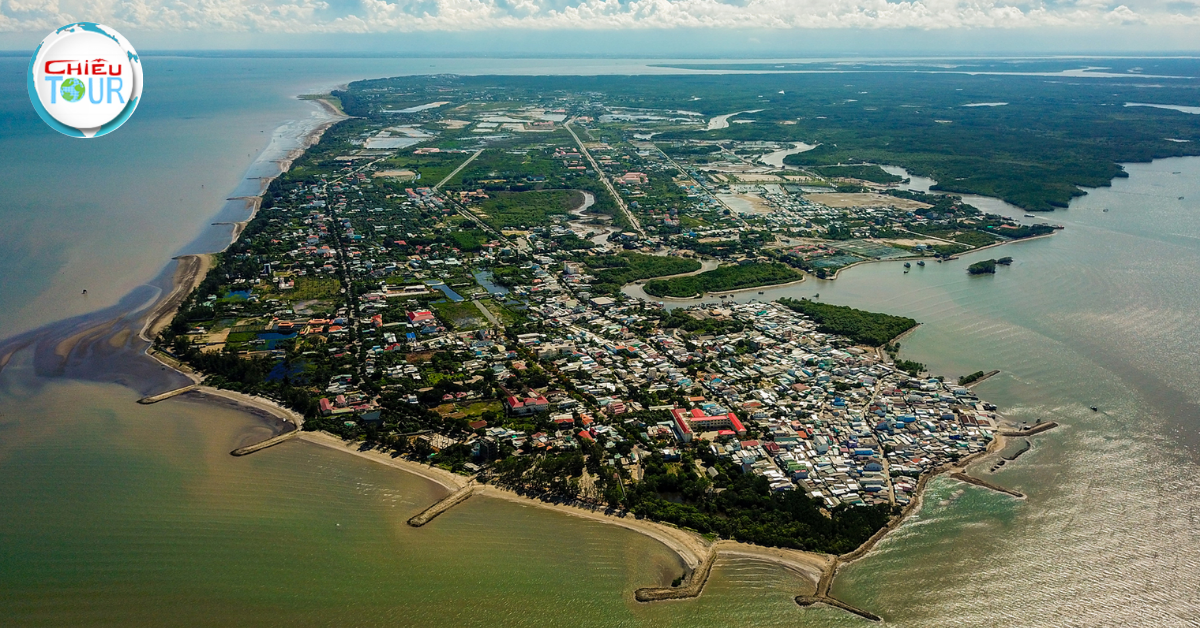
.jpg)


